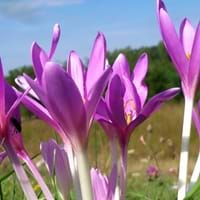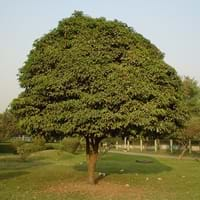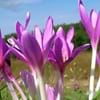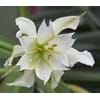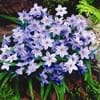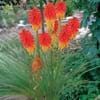Life Span
Perennial
Perennial
Type
Bulb or Corm or Tuber
Fruit
Origin
Mediterranean, Turkey
India, Melanesia
Types
Not available
Alphonso, Florigon, Jakarta
Number of Varieties
Not Available
Habitat
Lawn, meadows, Sunny Edge, Woodland Garden
Subtropical climates, Tropical regions
USDA Hardiness Zone
6-9
10-15
AHS Heat Zone
9-1
Not Available
Sunset Zone
21,22
H1, H2, 23, 24
Habit
Clump-Forming
Oval or Rounded
Flower Color
Fuchsia, Rose
Yellow, Red
Flower Color Modifier
Bicolor
Bicolor
Fruit Color
Not Available
Yellow, Red, Green, Orange, Pink, Rose, Bronze
Leaf Color in Spring
Green
Red, Purple, Dark Green, Bronze
Leaf Color in Summer
Light Green
Red, Purple, Dark Green, Bronze
Leaf Color in Fall
Several shades of Green
Red, Purple, Dark Green, Bronze
Leaf Color in Winter
Light Green
Light Green
Leaf Shape
Long Broad
Ovate
Plant Season
Spring, Fall
Spring, Summer, Fall, Winter
Sunlight
Full Sun, Partial Sun
Full Sun
Growth Rate
Medium
Medium
Type of Soil
Loam
Loam, Sand
The pH of Soil
Acidic, Neutral
Acidic, Neutral, Alkaline
Soil Drainage
Well drained
Well drained
Bloom Time
Late Summer, Early Fall
Early Spring, Spring, Late Spring, Early Summer, Summer, Winter, Late Winter
Tolerances
Drought
Drought
Where to Plant?
Container, Ground, Pot
Ground
How to Plant?
Corms or bulbs, Seedlings
Grafting, Seedlings, Stem Planting, Transplanting
Plant Maintenance
Low
High
Watering Requirements
Do Not over Water, Keep the ground moist but not water-logged
Over-head watering
In Summer
Lots of watering
Lots of watering
In Spring
Moderate
Moderate
In Winter
Average Water
Average Water
Soil pH
Acidic, Neutral
Acidic, Neutral, Alkaline
Soil Type
Loam
Loam, Sand
Soil Drainage Capacity
Well drained
Well drained
Sun Exposure
Full Sun, Partial Sun
Full Sun
Pruning
Cut or pinch the stems, Remove damaged leaves, Remove dead flowers, Remove dead leaves
Remove damaged leaves, Remove dead branches, Remove dead leaves
Fertilizers
All-Purpose Liquid Fertilizer, fertilize in summer
All-Purpose Liquid Fertilizer
Pests and Diseases
Slugs
Red blotch
Plant Tolerance
Drought
Drought
Flowers
Showy
Insignificant
Flower Petal Number
Single
Single
Foliage Texture
Coarse
Medium
Foliage Sheen
Not Available
Glossy
Attracts
Bees, Butterflies
Birds
Allergy
poisonous if ingested, Toxic if not prepared properly
bullous cheilitis, contact allergic dermatitis, Urticaria
Aesthetic Uses
Beautification, Cottage Garden, Showy Purposes
Showy Purposes
Beauty Benefits
Removes pimples
Acne, Improve hair condition, Makes teeth white, Moisturizing, Removes dandruff
Environmental Uses
Air purification
Air purification, Food for birds, Shadow Tree
Medicinal Uses
Arthritis, Gout, Itching
anti-cancer, Digestion problems, Eye Problems, High cholestrol, Immunity
Part of Plant Used
Bulbs, Flowers, Seeds
Whole plant
Other Uses
Used as Ornamental plant, Used for its medicinal properties
Grown for shade, Used As Food, Used as Ornamental plant
Used As Indoor Plant
No
No
Used As Outdoor Plant
Yes
Yes
Garden Design
Alpine, Container, Mixed Border, Rock Garden / Wall
Edible, Feature Plant, Fruit / Fruit Tree, Shade Trees, Tropical
Botanical Name
Colchicum autumnale
MANGIFERA indica
Common Name
Autumn Crocus, meadow saffron, naked lady
Mango
In Hindi
शरद ऋतु का पौधा
आम का पेड़
In German
Herbstzeitlose
Mango Baum
In French
colchique d'automne
Manguier
In Spanish
cólquico
Árbol de mango
In Greek
φθινόπωρο κρόκος
Mango Tree
In Portuguese
aftomn gema
Mangueira
In Polish
aftomn żółtka
Drzewo mango
In Latin
aftomn vitellus
Mango ligno
Phylum
Magnoliophyta
Magnoliophyta
Class
Liliopsida
Magnoliopsida
Order
Liliales
Sapindales
Family
Liliaceae
Anacardiaceae
Genus
Colchicum
Mangifera
Clade
Angiosperms, Monocots
Not Available
Tribe
Colchiceae
Not Available
Subfamily
Not Available
Not Available
Number of Species
Not Available
Season and Care of Autumn Crocus and Mango Tree
Season and care of Autumn Crocus and Mango Tree is important to know. While considering everything about Autumn Crocus and Mango Tree Care, growing season is an essential factor. Autumn Crocus season is Spring and Fall and Mango Tree season is Spring and Fall. The type of soil for Autumn Crocus is Loam and for Mango Tree is Loam, Sand while the PH of soil for Autumn Crocus is Acidic, Neutral and for Mango Tree is Acidic, Neutral, Alkaline.
Autumn Crocus and Mango Tree Physical Information
Autumn Crocus and Mango Tree physical information is very important for comparison. Autumn Crocus height is 7.60 cm and width 7.60 cm whereas Mango Tree height is 910.00 cm and width 460.00 cm. The color specification of Autumn Crocus and Mango Tree are as follows:
Autumn Crocus flower color: Fuchsia and Rose
Autumn Crocus leaf color: Green
Mango Tree flower color: Yellow and Red
- Mango Tree leaf color: Red, Purple, Dark Green and Bronze
Care of Autumn Crocus and Mango Tree
Care of Autumn Crocus and Mango Tree include pruning, fertilizers, watering etc. Autumn Crocus pruning is done Cut or pinch the stems, Remove damaged leaves, Remove dead flowers and Remove dead leaves and Mango Tree pruning is done Remove damaged leaves, Remove dead branches and Remove dead leaves. In summer Autumn Crocus needs Lots of watering and in winter, it needs Average Water. Whereas, in summer Mango Tree needs Lots of watering and in winter, it needs Average Water.
